Railing Design for House Front Side for Balcony – A balcony can add great aesthetic appeal and functionality to a home. It provides a space to enjoy the outdoors while being protected from the elements.
Choosing the right balcony railing design is crucial not just for appearance but also for safety. There are many options to consider when selecting railings for your balcony.
Railing Design for House Front Side for Balcony
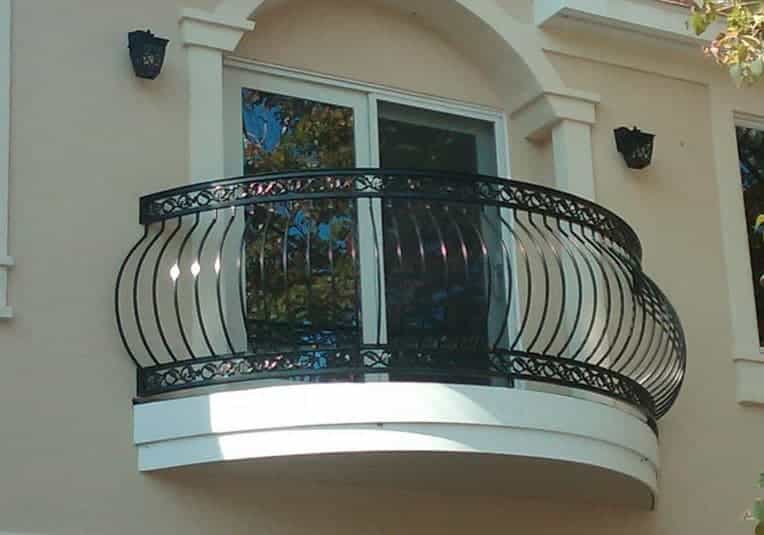
The Ideal Height for Balcony Railings
One of the most important factors in balcony railing design is the height. Railings that are too short leave the balcony unsafe, while railings that are overly tall can feel closed-off and restrictive. The ideal height provides open visibility while still protecting from falls.
For most residential balconies, a height between 36 and 42 inches is recommended. This allows most adults to see over the railing while also being tall enough to make climbing over difficult for small children. Building codes often specify a minimum height of 36 inches. Going up to 42 inches adds extra security.
For commercial and high-rise balconies, a height of 42 inches is usually mandated as a minimum by building codes. At dizzying heights, the extra 6 inches of railing can make a difference in preventing deadly falls.
Consider the Width Between Railings
In addition to the overall height, pay attention to the width between vertical railing supports. Building codes generally require a maximum width of 6 inches between vertical posts. This prevents even small children from slipping through.
However, for an open feeling, you may want a narrower spacing of 4 inches or less. This enhances visibility while still meeting safety requirements. Wider spacing also requires stronger horizontal railing supports to handle greater pressure.
Materials for Balcony Railings
Balcony railing materials need to be strong, durable, and weather-resistant. Some top options include:
- Wrought Iron – Classic material for railings; and decorative styles; requires painting to resist rust
- Aluminum – Lightweight; won’t rust; easy to clean; affordable option
- Stainless Steel – Sleek modern look; strong and rust-resistant; higher cost
- Wood – Warm, natural appearance; needs to be treated with a waterproof stain
- Glass – Transparent panels offer open views; often paired with metal frames
- Metal Cable – Modern minimalist look; cables threaded through posts
- Composite – Blend of recycled plastics/wood; durable and low maintenance
The material you choose impacts the look, cost, and longevity of the balcony railings. Aluminum, steel, and composite materials offer the greatest durability for oceanfront and high humidity areas. Wrought iron and wood provide a traditional aesthetic but require more maintenance. Adding glass panels creates an airier feel while maintaining security.
Complementing the Style of Your Home
When selecting a design for your balcony railing, you’ll want to consider the architectural style of your home. The railings should enhance the overall look rather than appearing out of sync.
For traditional homes, wrought iron, wood, and decorative metalwork designs are attractive options. Craftsman bungalows and cottages often use simple wood railings to mesh with the style. Railings with a sleek contemporary profile suit modern homes best. Glass panel railings also have a streamlined look.
Using Railings to Increase Privacy
In addition to safety, balcony railings also impact privacy. Completely transparent glass panels offer the least privacy. Widely spaced metal railings increase visibility both from and onto the balcony.
For more seclusion, choose railings with narrow spacing. Adding in opaque glass panels or decorative screenwork also helps block sight lines. If the balcony overlooks a walkway or common area, extra privacy may be desirable.
Cost Considerations for Railing Projects
The cost of balcony railings can vary widely depending on the materials and complexity of the design. Basic aluminum railings start around $25 per linear foot. More intricate wrought iron designs can cost $100 per linear foot or more. Professional installation will also impact the total project budget.
It’s important to get contractor estimates before setting a budget for your railing project. Also, factor in costs for any preparatory work like repairing the balcony surface. Applying weather-resistant finishes to wood or iron railings adds expense too.
Popular Styles of Balcony Railings
Now that the technical factors have been covered, let’s look at some of the most popular options for styling your balcony railing.
-
Sleek Glass Railings for Balcony
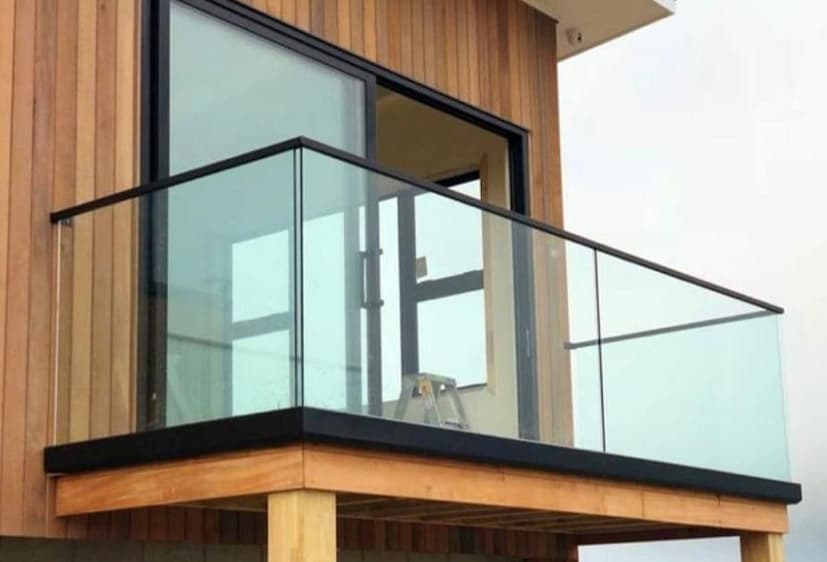
Frameless or partially framed glass railing panels create a contemporary see-through look. Tempered glass is used for safety and durability. Layering transparent and opaque glass panels adds subtle interest. Frosted glass diffuses views without fully blocking them. Glass railings suit modern homes and high-rise balconies.
-
Decorative Ironwork Designs for Balcony
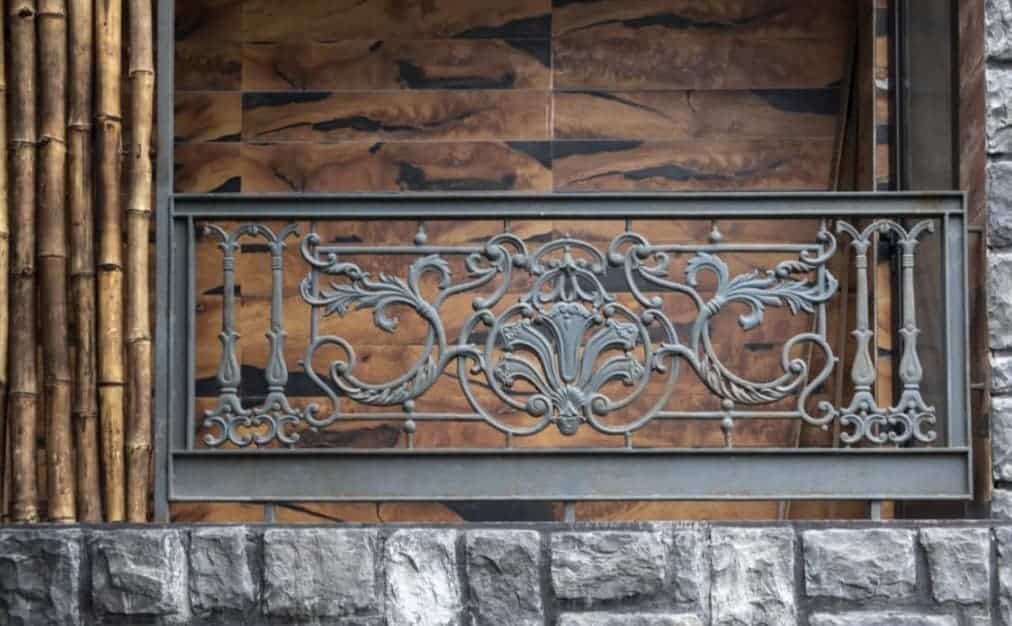
Intricately patterned wrought iron railings are a signature choice for traditional architecture. Flowing curves and elaborate filigree details are artistic accents to any home. Iron railings convey a timeless elegance but require diligent maintenance to prevent rust. Ornate ironwork matches French Provincial and Italianate styles.
-
Wood Plank Railings for Balcony
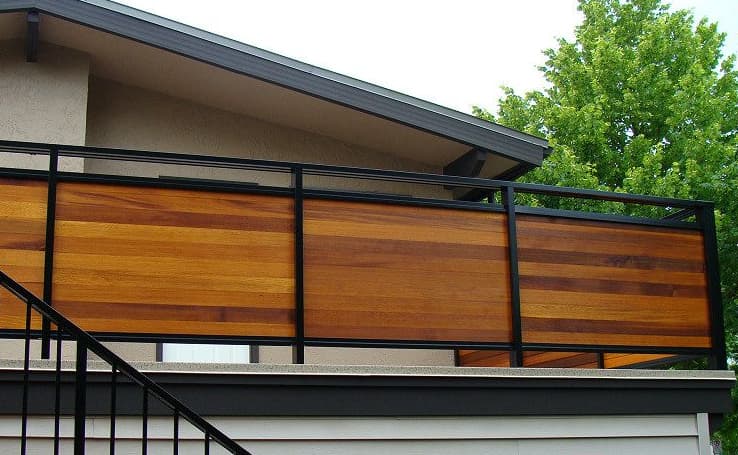
For a rustic yet refined look, wood plank railings are a versatile option. Horizontal planks made of cedar, redwood, or pressure-treated pine have an inviting warmth. Wood ages gracefully over time. Use generous width planks for fewer seams. Top planks with a rounded edge cap for safety and to finish the look.
-
Woven Wire Fencing for Balcony
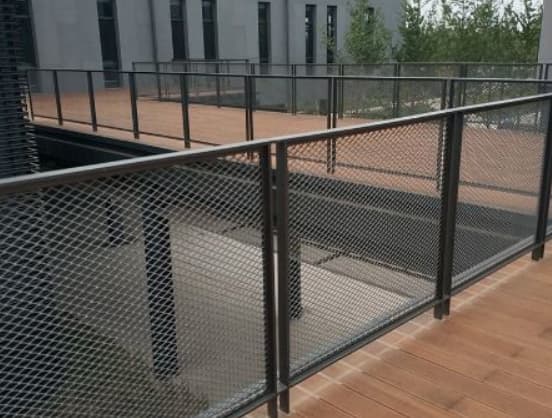
An open-air feel comes from using woven wire mesh panels on balcony railings. Galvanized steel or aluminum wires are crisscrossed through decorative frames. The see-through pattern prevents climbing yet maintains visibility. Durable wire mesh is also very affordable.
-
Cable Railings for Balcony
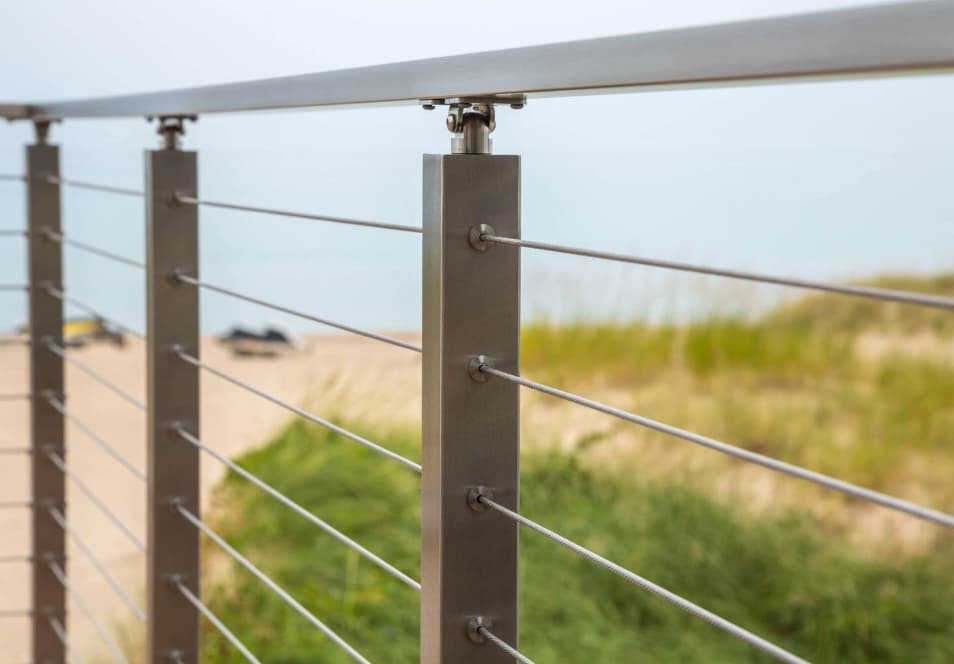
For minimalist contemporary railings, stainless steel cables offer sleek transparency. Cables are threaded vertically through holes in the top and bottom rails. Tension on the cables keeps the structure securely in place. Adding light posts at regular intervals along the railing provides support.
-
Black Metal Railings for Balcony
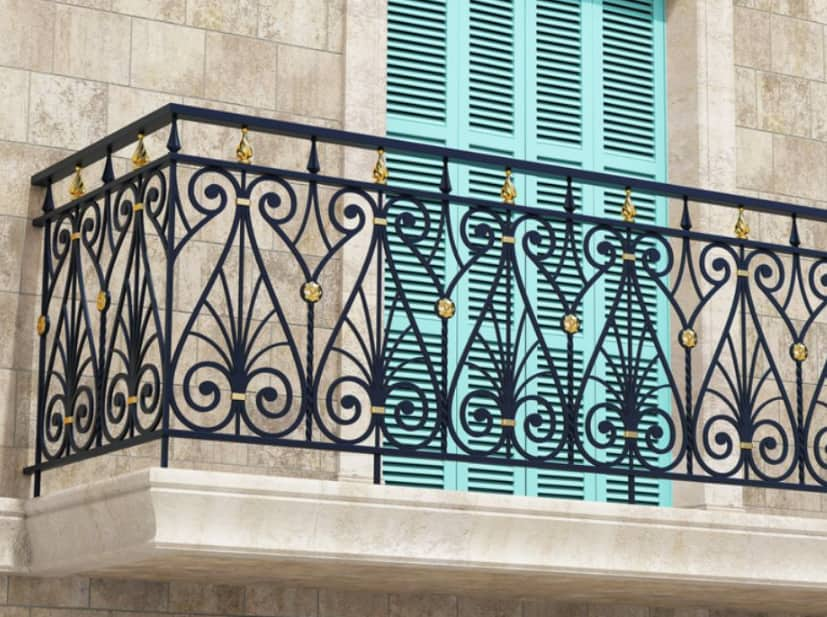
Mysterious and modern, black metal railings make a dramatic style statement. They create a frame for overlooking the view beyond. Painted wrought iron and powder-coated aluminum are options. Matte black color complements bold exterior color schemes.
-
Mixed Materials for Contrast for Balcony
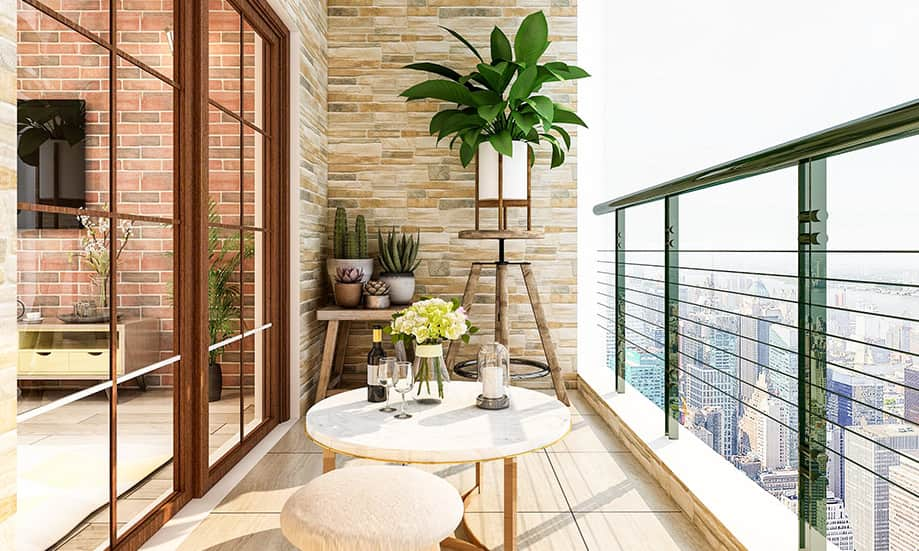
Blending different railing materials creates an eye-catching contrast. Try combining metal posts with wood cap rails or opaque and transparent glass panels. Using one material horizontally and another vertically also adds interest. Mixing materials works well for a rustic-modern aesthetic.
-
Creative Infill Options for Balcony
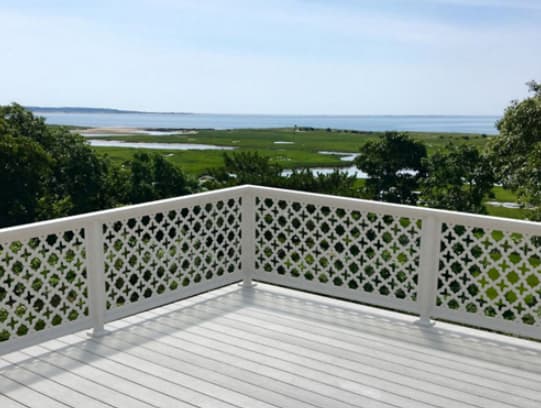
The space between railing posts can also become an opportunity for artistic flair. String lights woven through the gaps add twinkling charm in the evening. Privacy panels or trellis pieces provide greenery spots for potted plants. Cut-out designs, basket weaves, and other intricate latticework infuse personality.
-
Plant-Adorned Railings for Balcony
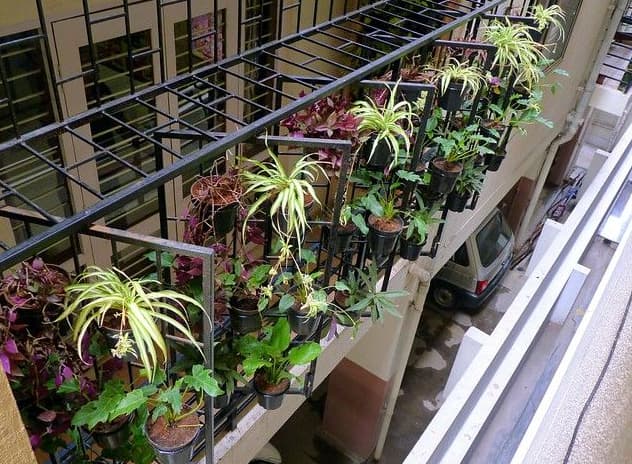
Speaking of plants, one of the prettiest ways to decorate railings is with cascading greenery. Train climbing vines like ivy or passionflower onto the rails. Set pots of petunias or other flowering balcony plants along the top rails. The lushness softens hard edges and adds natural beauty.
Key Tips for Designing Your Balcony Railing with Railing Design for House Front Side for Balcony:
Now that you’ve seen the possibilities, keep these tips in mind as you design the perfect railing for your balcony:
- Prioritize safety with adequate height and spacing that meets codes.
- Choose durable, low-maintenance materials suited to your climate.
- Complement the overall style of your home’s exterior for cohesion.
- Use visual tricks to increase privacy and views as desired.
- Allow for some creativity and personal flair in the railing design.
- Check contractor estimates and budget accordingly before starting your project.
The ideal balcony railing improves the aesthetics, safety, and enjoyment of your outdoor space. With some thoughtful planning upfront, it can become a stylish focal point that provides security and peace of mind for years to come.
The many beautiful options available let you balance form and function for your unique home.
Also Check:
- Best Mandir Design for Home
- Low Budget Modern 3 Bedroom House Design
- Indian Simple House Colour Combination Outside
- Modern Window Grill Design Ideas
Conclusion:
When choosing a Railing Design for House Front Side for Balcony, it is significant to consider factors such as the general look of your house, ease of maintenance and cleaning, quality of material used, and value.


